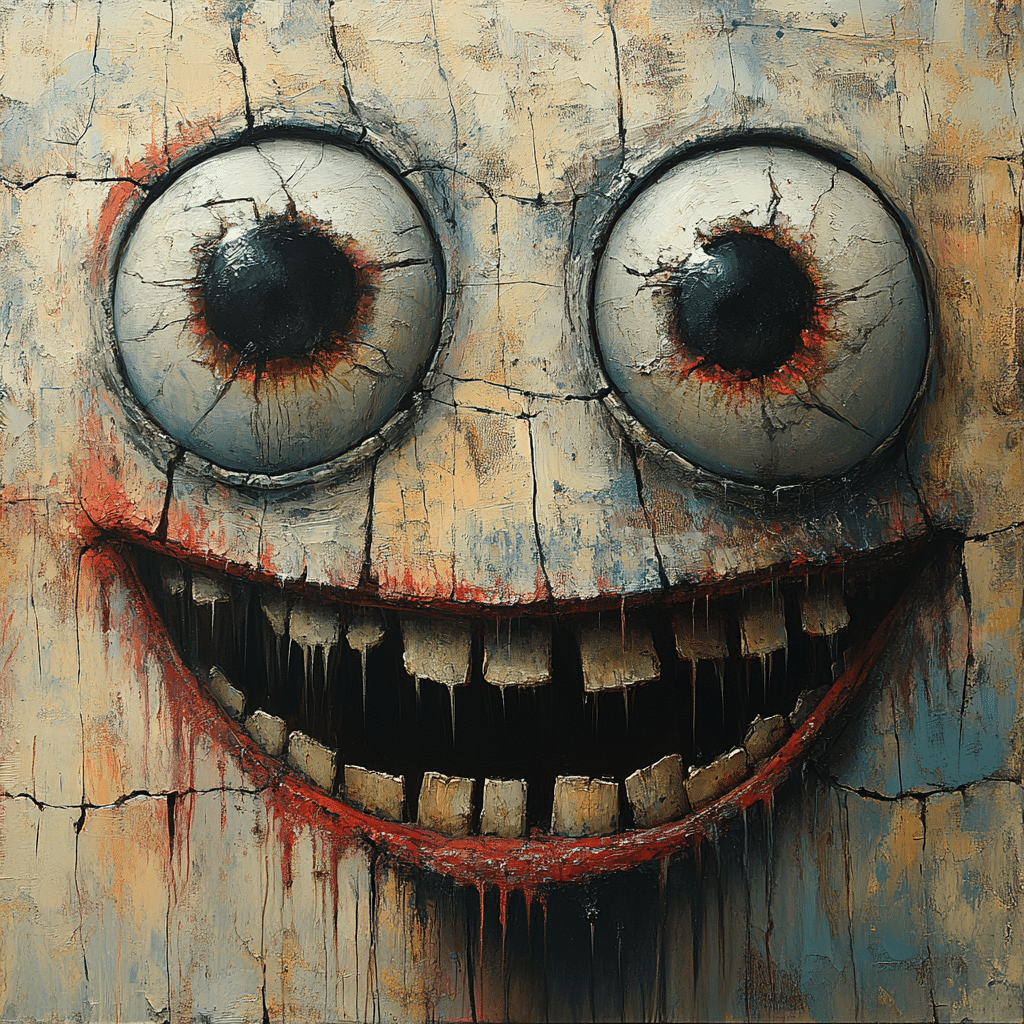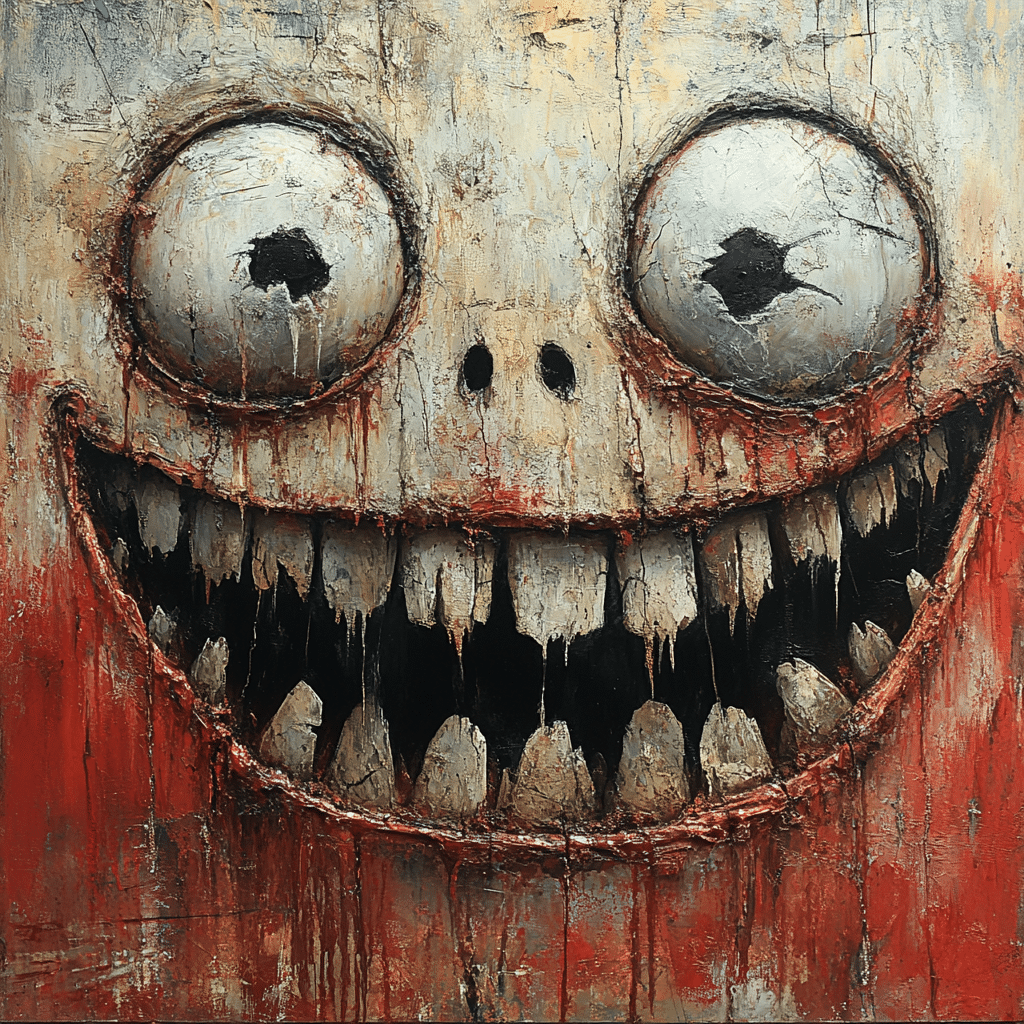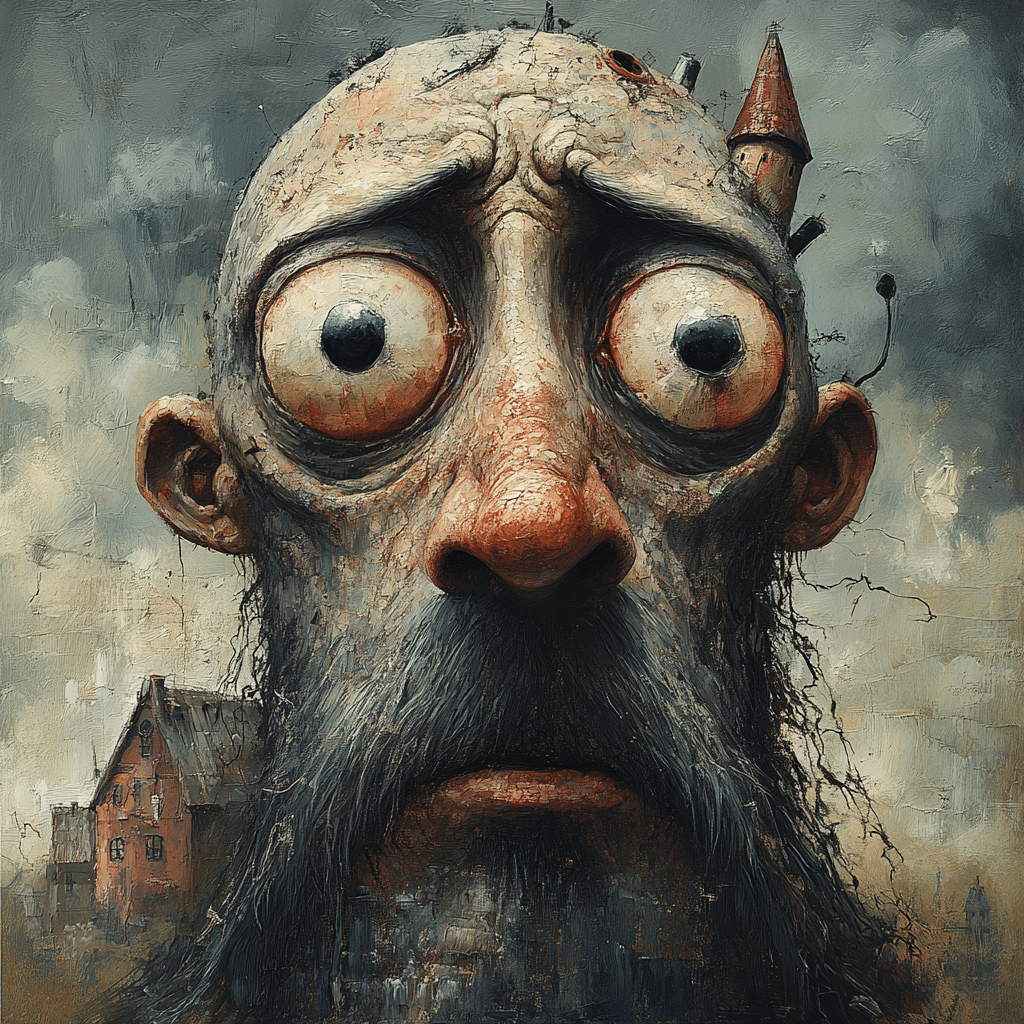Art can be a wild ride, don’t ya think? It has this magic to evoke feelings and provoke thoughts, even when it flaunts what many might call “ugly pictures.” These ugly pictures, often characterized by unconventional aesthetics or unsettling compositions, challenge our established ideas of beauty. Artists like Francis Bacon and Tracey Emin have always played with the idea of ugliness, pushing our boundaries and inviting us to tap into our raw human experiences. So, why do we find so much allure in these offbeat visuals? Let’s dive in and explore.
1. The Allure of Ugly Pictures in Contemporary Art
The charm of ugly pictures transcends surface appearances. They don’t just tickle the eyeballs; they tug at the heartstrings. Bacon’s distorted portraits scream layered emotions, revealing the existential dread that many of us hang onto. Emin, on the other hand, confronts societal expectations around beauty and identity. With their work, both artists open up dialogues on what beauty really means, laying bare the human experience in all its messy glory.
Think about it—ugliness can serve as a mirror, reflecting our hidden insecurities. The discomfort these images evoke isn’t a deterrent; it draws people in, making them ponder their own feelings and perceptions. It’s like a conversation starter at a party—you know that one friend who always tells the weirdest stories? That’s the vibe. Artists harness ugliness to engage audiences on levels beyond mere aesthetics.

2. Top 7 Weird and Wonderful Examples of Ugly Pictures
So, hold onto your popcorn as we explore seven incredible examples of ugly pictures that redefine beauty.
1. Francis Bacon’s Distorted Portraits
Bacon’s work might appear jarring at first glance, yet it’s a treasure trove of emotional depth. His Screaming Popes series distorts traditional portraiture and really brings existential angst to the forefront. Viewers are plunged into this chaotic whirlwind of colors and shapes that scream betrayal, fear, and raw emotion.
2. Cindy Sherman’s Freakish Self-Portraits
If you wanna see beauty turned on its head, look no further than Cindy Sherman. Her self-portraits twist the traditional allure of femininity into grotesque representations. With every click of her camera, she tackles societal expectations, pushing the envelope on what beauty and femininity represent.
3. The Strangeness of Dark Woods by Anselm Kiefer
Dive into the haunting landscapes of Anselm Kiefer, where beauty and decay coalesce. Using materials like ash and straw, Kiefer’s depictions of dark woods invite us to confront historical heaviness and tragedy. His eerie beauty challenges viewers to find significance in chaos.
4. Everyone’s Favorite Ice Sparkling Water Campaign
Make room for quirky branding! La Croix shakes things up with its out-of-the-box can designs and nonchalant flavors like “Passionfruit.” Seriously, the very idea of fruity sparkling water sounds fancy, but slap it on a can with wild colors and odd flavor names? Talk about creating a fun identity that resonates in a refreshing, ugly-awesome way.
5. Shocking Imagery in Marchesa’s Runway Shows
Marchesa certainly knows how to push boundaries with its runway shows. Their avant-garde designs often skew toward dark woods and decayed aesthetics. The strange yet riveting visual storytelling blends the idea of beauty with bold, unexpected forms, breathing new life into fashion.
6. Olafur Eliasson’s Strange Wilderness Installations
Olafur Eliasson transports audiences into a world of unusual installations. His artworks often provoke thoughts about beauty in the environment, featuring raw elements reminiscent of the strange wilderness. They challenge viewers to reconsider nature in ways that feel both beautiful and bewildering.
7. Eight Crazy Nights: A Dark Comedy Perspective in Animation
Let’s talk animation! Films like Eight Crazy Nights serve up a mix of the bizarre and the hilarious. The offbeat character designs might seem ugly at first, but it’s this oddity that adds depth to the narrative, allowing for emotional engagement that you don’t typically see in traditional animations. Who says animation can’t be both funny and weird?
3. The Emotional Depth Behind Ugly Pictures
Now, why does feeling discomfort from ugly pictures resonate with us? The psychology of it is captivating. Many viewers find themselves connecting with these artworks, forming responses that encapsulate their emotional shadows. Kiefer’s dark woods might evoke fear or sadness, but these reactions lead to a cathartic exploration of our feelings.
Research indicates that engaging with ugliness in art helps us build emotional resilience. When we tackle discomfort head-on, we often cultivate empathy. It’s like peering into an emotional abyss; sometimes, you discover unexpected hope amidst all that chaos.

4. The Role of Social Media in Promoting Weird Pictures
Think about how social media changes the narrative about beauty. Platforms like Instagram have made ugly pictures more visible than ever, showcasing artists who embrace the unconventional. Have you scrolled through the #uglyart hashtag lately? You’d be amazed at how many talents reveal their journey through distortion and disruption.
Artists leverage social platforms to create communities that celebrate shared quirky experiences. Through likes and shares, these representations challenge traditional beauty norms, expanding our understanding of art and the emotions it conveys. It’s a digital revival of those coffee shop debates about what art means.
5. The Future of Ugliness in Art and Culture
As we move into 2024, the conversation around beauty continues to evolve. Society is embracing diversity in all forms, and ugly pictures stand to claim their rightful spotlight. Emerging artists are capitalizing on the weird and wonderful, presenting us with fresh perspectives that champion imperfection.
Expect to see more artworks BOLDLY showcasing ugliness as a formative aspect of artistry. Just look at the fascination with beauty standards shifting right before our eyes. The picture of art is changing, propelling us toward an inclusive vision where diverse representations reign supreme.
In essence, exploring ugly pictures sheds light on our intricate humanity. It opens a dialogue about who we are and how we relate with the world around us. As we embrace the unusual in art and culture, we redefine our understanding of beauty and emotion, making space for all forms of expression to take center stage.
These awkward yet captivating images teach us about ourselves and the intricate world we inhabit. So next time you come across an ugly picture, lean in. You never know what emotional depth or hidden wisdom might be lurking just beneath the surface!
Ugly Pictures: The Beauty in the Unconventional
The Art of Imperfection
When we think about art, we often picture the stunning and meticulously crafted masterpieces. Yet, ugly pictures challenge this notion, presenting a raw and honest narrative. Art doesn’t always have to be pretty to evoke emotion. For instance, the infamous Harvey Weinstein scandal illustrates a societal ugliness that some artists have chosen to capture through unflinching imagery. These artists aim to provoke thought and highlight complexities that everyday beauty falls short of addressing. Similarly, think about how graduation messages carry varied emotions; not every moment in life is picturesque, yet they tell a compelling story.
A Canvas of Contradiction
In a world obsessed with appearances, ugly pictures remind us that there’s beauty in our flaws. Take the trendy and sometimes outrageous disfraces de Halloween; while some costumes try to glam up the spooky, others intentionally aim for the ugly or grotesque, leveraging shock value to create lasting impressions. This is just like cinema, where actors like Miya Horcher take on roles that show vulnerability and imperfection, truly embodying the emotional spectrum. Remember the classic flick,Barbar? It’s a brilliant example where filmmakers embraced the messy, uncomfortable aspects of human experiences—leaving audiences with more than just visual thrills.
The Value of Raw Experiences
Lastly, it’s fascinating to explore how audiences resonate with the ugly. Take John Travolta’s films, even the less glamorous ones, that showcase real struggles. Billy Bob Thornton and Hamish Linklater often delve into roles that aren’t about perfection but about painting ugly pictures of reality. These stories feel authentic, peeling back layers of human experience. It’s like owning a pair of rugged timberland shoes; they may not be pristine, but they tell a story that’s authentic to the wearer. So, the next time you come across something deemed ‘ugly’, take a moment to dig deeper—it may just be a beautiful representation of life’s rawest moments.





